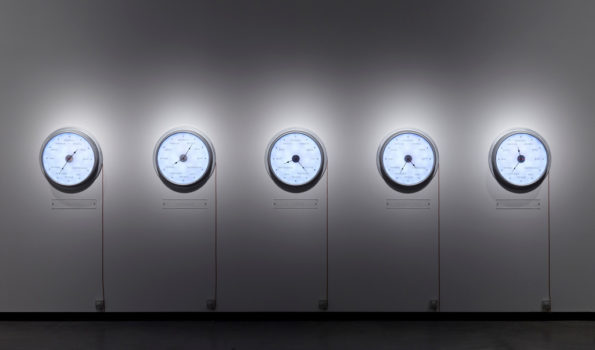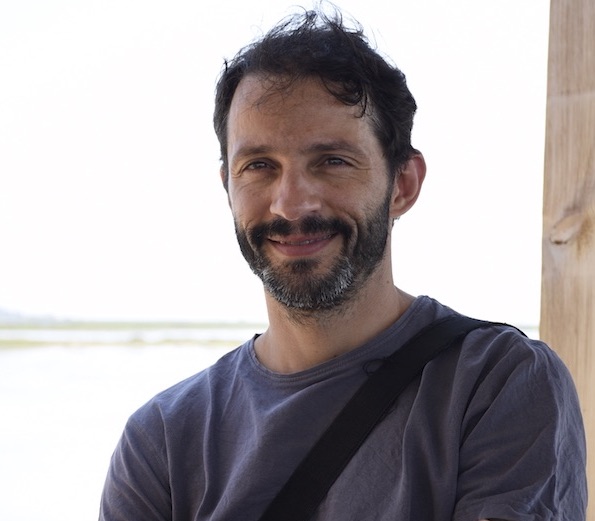Search
To search for an exact match, type the word or phrase you want in quotation marks.
A*DESK has been offering since 2002 contents about criticism and contemporary art. A*DESK has become consolidated thanks to all those who have believed in the project, all those who have followed us, debating, participating and collaborating. Many people have collaborated with A*DESK, and continue to do so. Their efforts, knowledge and belief in the project are what make it grow internationally. At A*DESK we have also generated work for over one hundred professionals in culture, from small collaborations with reviews and classes, to more prolonged and intense collaborations.
At A*DESK we believe in the need for free and universal access to culture and knowledge. We want to carry on being independent, remaining open to more ideas and opinions. If you believe in A*DESK, we need your backing to be able to continue. You can now participate in the project by supporting it. You can choose how much you want to contribute to the project.
You can decide how much you want to bring to the project.

During the July Revolution (Paris, 1830) the people shot at clock towers. They wanted to break the continuum of history, declares Benjamin in his Thesis, inaugurating a new age. Today we often hear shots against the time of clocks, although being of a symbolic and intellectual nature, there is no longer any need to call watchmakers to repair them. Overcoming a few differences, there are obviously common features between the shots fired almost two hundred years ago and today’s criticisms: the clock has become the symbol of a society that is unable to interrupt its monotonous tic-tac, tic-tac, tic-tac and that, like a hamster in its wheel, runs away in despair, incapable of leaving behind economic precariousness and the continuous violation of fundamental rights. Yet how is it possible that the celebrated image of progress should have become a perverse symbol of domination and historical paralysis?
Almost seven hundred years ago, when the first mechanical clocks were built in church towers and town halls, Europe found them fascinating. These devices helped synchronise the growing social complexity of cities and over time would gradually pervade all spheres of culture. The mechanical clock, a technical invention, was much more than a product of science: it favoured scientific progress in fields such as astronomy, for instance. It was also used as a metaphors, to explain the human body (Descartes), the State (Hobbes), cosmic harmony (Leibniz) and, as is well known, the economy: the famous phrase ‘time is money’ was a prophetic expression voiced by one of the fathers of the American constitution, Benjamin Franklin, who identified this key principle of modern times. As an instrument for controlling time, broadly speaking the clock was welcomed as synonymous with freedom, because it enabled cities to organise their rhythms independently of the Church and individuals to manage their own everyday activities.
Not many people grasped its perverse nature. Shakespeare had warned, in the words of Prince Henry, ‘What a devil hast thou to do with the time of day? Unless hours were cups of sack and minutes capons … I see no reason why thou shouldst be so superfluous to demand the time of day.’ Henry IV, Part 1, Act 1, Scene 2. In what terms would the English poet have expressed his scorn if he had known that two centuries later it would be used to control the rhythms of factory workers, of army soldiers and the users of any other disciplinary device such as hospitals or schools? Today clocks aren’t only omnipresent in the most ordinary appliances such as mobile phones, cars or dishwashers, but have completely permeated human awareness. Social habits have been transformed by clocks and watches, and our way of thinking time is based on the temporal model of these devices. We have naturalised their qualities in surprising ways. One of the qualities of time is rhythm (the rhythm of life) that today is dissociated from natural cycles, something we would never want to stop. Sleep has become the only form of resistance for a society that is totally active 24 hours a day, 7 days a week (Crary). A second characteristic is its endless fragmentation: if the Impressionists had already shown symptoms of this frenzy to capture a brief interval of time, a few decades later the minimum fraction of time became invisible when Étienne-Jules Marey invented photographic devices to capture intervals of tens of thousandths of a second (Doane). Film was about to emerge as a new art form. A third quality of the time marked by watches and clocks is that it was the same everywhere, regardless of what and when people did. In this sense, well-meaning proposals such as changing working hours or time banks, that try to manage hours differently, always depend on this model of abstract and quantitative time. The fact that many working activities such as those we define as intellectual and creative activities are classified into working hours is quite absurd and generates frustration and distress. Not to mention the stressful habit of organising our free time and holiday time to the minute. Our awareness of historical temporality has also changed under the influence of chronological time. On the one hand, we worry about the obsolescence of our skills and knowledge in a society that is presumably changing by the minute. But today social progress doesn’t involve the enlightened utopias of the eighteenth century or the revolutionary utopias of the nineteenth century. The utopian horizon has become clouded in this apocalyptic atmosphere of populism and climate change. Given that the only changes that most people seem to desire are those brought by technological innovations and fashion, it is beginning to be a cliché among sociologists to declare that these changes are the perfect complement to present structures of domination (H. Rosa).
At the end of the day, if we were to describe in simple terms the postmodern blind alley to which we have been led by modern revolutions, we would have to speak of the disrepute of narratives of progress; of the nostalgic consumption of forms of the past (Estes, Eliasson) that mocks its subversive potential (Barceló, Koons); of the social limitations of the criticism of an attitude of resistance (Hal Foster); and of the feeling that historical evolution has come to an end, as if we were living in an age ofpresentism where past and future have been assimilated by a slow present (Gumbrecht). We live in a society in which the most precious time, the immediacy of real time is the exact definition of non-time, that which abolishes the time interval. So it is not surprising that we should be running all day long in order to get everywhere without moving from where we are.
Against the colonisation of the model of chronological time here and everywhere, intellectual criticism turns to exotic terms and hoists the flag of temporal pluralism: M. Bal speaks of preposterous history (see his wonderful analysis of the work of Stan Douglas). Didi-Huberman resorts to Agamben’s term of anachronism to explain the epistemological productivity to relate a fresco by Fra Angelico to Pollock’s drippings. Hernández Navarro refers to works like those by González-Torres or Pierre Huyghe as triggers of affective temporalities. Christine Ross speaks of (perceptive) suspension of history to explore in depth the work of Francis Alÿs. Some artists have worked on the theme of waiting (Martí Anson, Fito Conesa), non-doing (Christina Schultz) or interruption as a form of resistance (Àngels Bernal). Dani Montlleó acts as a creative archaeologist to imagine impossible pasts. Hernández Navarro groups together concepts and practices like these under the pluralist umbrella of heterochrony, and Graciela Speranza proposes making ‘experience a matrix of conflictive temporalities’.
These approaches reveal the pressing and necessary attempt to recover the subversive potential of many pasts repressed by the reactionary ideology of the Thatcher-Reagan age, still valid, and to renew the imaginaries of the future. Nevertheless, very few of these ideas actually surpass the postmodern zeitgeist. I shall formulate some criticism of these heterochronic and supposedly antagonistic approaches that I hope to be able to further explore one day in a longer article. For a start, notions like anachronism, interruption, suspension and the reversal of time had already been cultivated by postmodernism, although in those days their purpose was to discredit the modern ideology of progress. Secondly, a rigorous phenomenological analysis would prove that alternative or heterochronic temporal experiences such as those mentioned here are impossible outside a horizon of experience in which the chronological model prevails (in practice, this can be established by observing the same museum visitors who are constantly checking their watches and despair when a work of video art lasts a long time). Finally, these works are always presented in an institutional context (art gallery, museum) definitory of modernism, and hence essentially have a modern temporality, characterised by the petrifaction of the historical time of the works, independence from social events, and the reception of art in the field of leisure. In short, we must conclude that aesthetic discourses and artistic practices linked to the critique of temporality are still developed in a context that is too indebted to the contemplative paradigm, distinguished by a certain art of reception that can in no way challenge the chronological temporality it attacks. In actual fact, it is its perfect dialectical complement, and we could think that to a certain extent it also strengthens it.
Womanhouse (extract) – Faith Wilding, Waiting from le peuple qui manque on Vimeo.
In my opinion, there are options to overcome this temporal formalism without having to burn works of art or demolish museums, but I can only suggest them, as it’s long since I’ve surpassed the space in which I can defend them. I am inspired by Nietzsche’s ideas of a. shunning historicismand thus b. bringing power to the presentthrough initiatives(active, not symbolic). Different artistic practices such as social or collaborative curatorship, art projects involving social participation and collaboration with the material economy are paths brimming with possibilities.
(Image: Raqs Media Collective, Now/Elsewhere, 2009)

Father of two little girls. An eternal student of philosophy, he spends hours slowly deciphering dense intricate works. From his position as a lecturer at Pompeu Fabra University, he also enjoys writing on the theory of art and images, and on contemporary art.
"A desk is a dangerous place from which to watch the world" (John Le Carré)